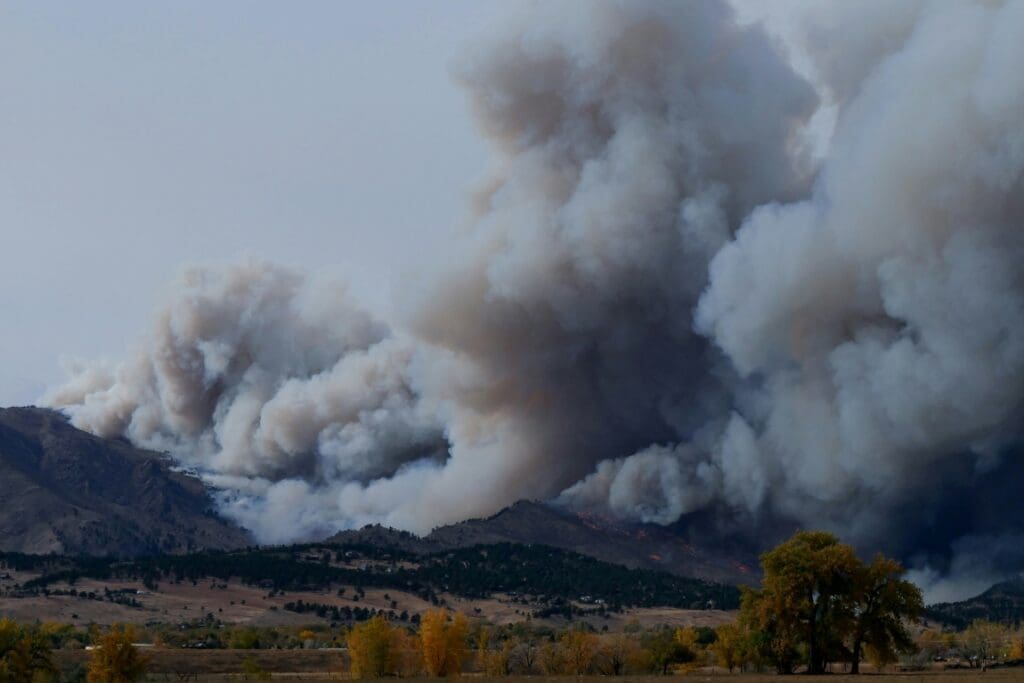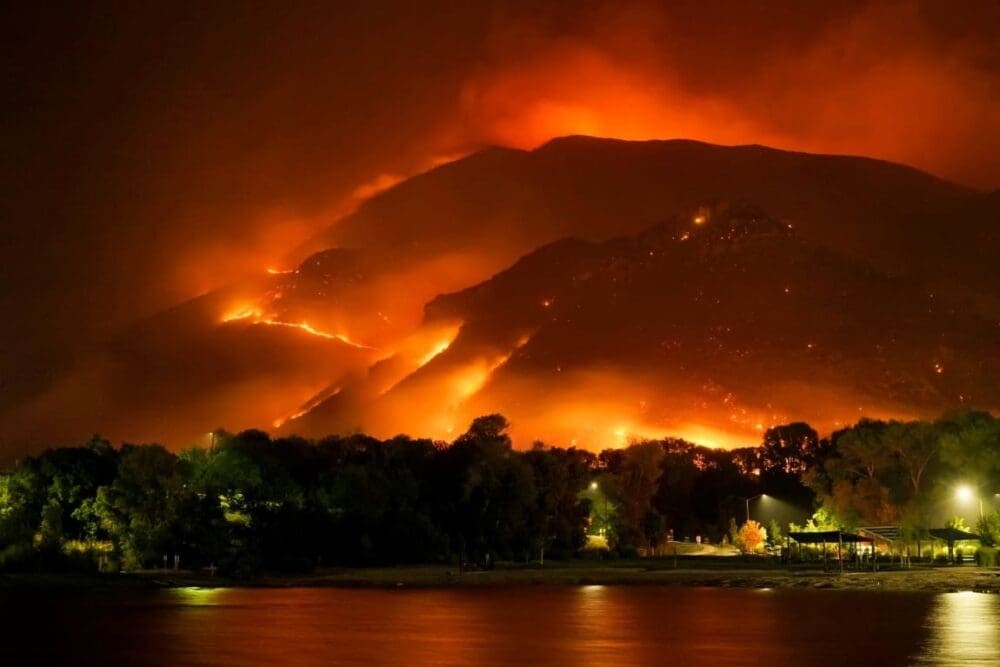By North Carolina State University
A new white paper on the many ways wildfires affect people and the planet makes clear that as fires become more intense and frequent, the urgency for effective and proactive fire science grows. By addressing these challenges, the fire research community aims to better protect our planet and its inhabitants.
Fire is a natural part of life on Earth, sustaining healthy and balanced ecosystems worldwide. But human activity and a changing climate are rapidly shifting both the frequency and severity of wildfire events, creating new risks to human and environmental health.
Recently, a group of scientists from 14 countries and across several disciplines – physical and social sciences, mathematics, statistics, remote sensing, fire communication and art, operational fire science, and fire management – gathered to discuss rapid changes in fire regimes and identify pathways to address these challenges.
The experts identified three grand challenges for fire science in the coming decades: understanding the role of fire in the carbon cycle, fire and extreme events, and the role of humans in fire.
“If we want to improve the assessment of future fire impacts on people and the planet, we need to start with a better understanding of how climate, land cover changes, and human land management practices drive fire distribution and severity in the coming decades,” says Douglas Hamilton, assistant professor of marine, earth and atmospheric science at North Carolina State University.
Hamilton, together with Morgane Perron of University Brest, France and Joan Llort of the Barcelona Supercomputing Centre, Spain, initiated the working group FLARE (which stands for Fire Science Learning AcRoss the Earth System).
To address the grand challenges, the scientists identified three pressing research priorities: understanding the net carbon balance of fire, developing rapid response tools for wildfire events, and understanding fire’s impact on society, especially marginalized and underrepresented populations.

The first priority, understanding the net carbon balance of fire, refers to understanding how fire’s carbon release, ecological recovery from fire, climate change, ocean biology, and ice melt all interact and affect the Earth’s carbon balance.
“Wildfires can significantly affect the global carbon cycle,” says Chantelle Burton, senior climate scientist at the Met Office UK. “Fires in ecosystems that store large amounts of carbon, such as peatlands, permafrost and forests, can release vast quantities of CO2 into the atmosphere. However, where that carbon ultimately ends up and its impact on future warming are harder to determine. Incorporating accurate fire-related carbon fluxes into Earth System Models is crucial for predicting climate outcomes and informing mitigation strategies, and it will require us to bring together experts from across the fire sciences.”
The second priority, developing rapid response tools for wildfire events, refers to developing tools for more timely and responsive answers to critical questions during extreme fire events and providing an annual report on key policy and media questions.
“Our observational, statistical, and modeling tools for assessing and projecting fire are improving rapidly, but the problem of extreme fires always remains one step ahead of us,” says Douglas Kelley, fire scientist at the UK Centre for Ecology & Hydrology (UKCEH). “To catch up, we need our tools to provide quick, robust answers to critical questions about climate impact, human causation, affected communities, and future risks. These answers need to be communicated clearly to non-specialists when they are most needed.”
The third priority aims to explore how fires affect marginalized and underrepresented communities, emphasizing Indigenous populations and environmental justice.
“So how should we be using all the tools at our disposal to improve measurements and help create better models for predicting the downstream effects of each fire?” Hamilton asks. “And once we do that, how do we best communicate these findings to our communities? We wanted to create a roadmap for science, so that our collaborations focus on getting these answers faster than at present.”
A main goal in the white paper is to be able to improve fire modeling, predictability, and mitigation on both regional and global scales, but Hamilton also hopes that FLARE will aid in fostering transdisciplinary science and in recruiting future fire scientists. “There simply are not enough scientists in this field to do the work,” Hamilton says.
Sebastian Diez from Universidad del Desarrollo, Chile and part of International Global Atmospheric Chemistry’s (IGAC) Early Career Committee further emphasizes the importance of global collaboration. “Researchers from the Global South face unique challenges that require locally adapted solutions,” Diez says. “Strengthening research capabilities and resources in less affluent regions is imperative to effectively address the transdisciplinary challenges of fire science.”
“Fire has always been there in the Earth System, what’s new is how it is being affected by and affecting humans in the context of wider planetary change,” says Sophie Hebden, research coordinator with Future Earth.. “By bringing together the different global research networks of Future Earth we were able to address these challenges across research silos and outline a transdisciplinary research agenda for the global fire community,” she added.
As fire events become more intense and frequent, the urgency for effective and proactive fire science grows. FLARE’s next steps are to address these challenges collectively, as a unified fire research community, to better protect our planet and its inhabitants.
The workshop was supported by global research networks including the Surface Ocean Lower Atmosphere Study (SOLAS), International Global Atmospheric Chemistry (IGAC), and Past Global Changes (PAGES) as well as organizations including European Space Agency (ESA), National Aeronautics and Space Administration (NASA), Met Office UK, and Centre for Ecology & Hydrology (CEH). The working group is funded by the ESA-Future Earth joint program. The workshop was further supported by NC State University, PAGES, and the Bermuda Institute of Ocean Sciences (BIOS).
More information: Hamilton DS, Kelley D, Perron MMG, Llort J, Burton C, Bergas-Masso E, et al. ‘Igniting Progress: Outcomes from the FLARE workshop and three challenges for the future of transdisciplinary fire science’, Zenodo (2024); DOI: 10.5281/zenodo.12634067. NCSU Press Release / Material. Featured image credit: Mike Newbry | Unsplash




